Probably the most controversial feature on the USAF’s new KC-46 Pegasus tanker is its Aerial Refueling Operator Station (AROS). The KC-46 abandoned the tried and true boom pod that puts the boom operator looking out the back of the jet through a window and replaced it with a series of multi-spectral cameras distributed around the aircraft and a hybrid 3D/2D remote system for operating the boom itself. The operators sit in the front of the aircraft at a two-person station that looks like something out of drone command trailer more than a high-flying gas station. In the past, we have seen photos of the system mocked up on the ground and in simulators, now Altus AFB has published a variety of images showing off the real McCoy during an actual mission.
AROS includes three main displays in front of each operator. The top set of displays is for situational awareness around the aircraft’s rear hemisphere. It is especially well suited for monitoring probe-equipped aircraft that are refueling via the aircraft’s centerline hose and drogue unit and the two podded units that will eventually be available to the Pegasus tanker. A number of them were supposed to be delivered with the initial aircraft, but to our knowledge, they are behind schedule due to flight certification issues and will not be delivered for some time.
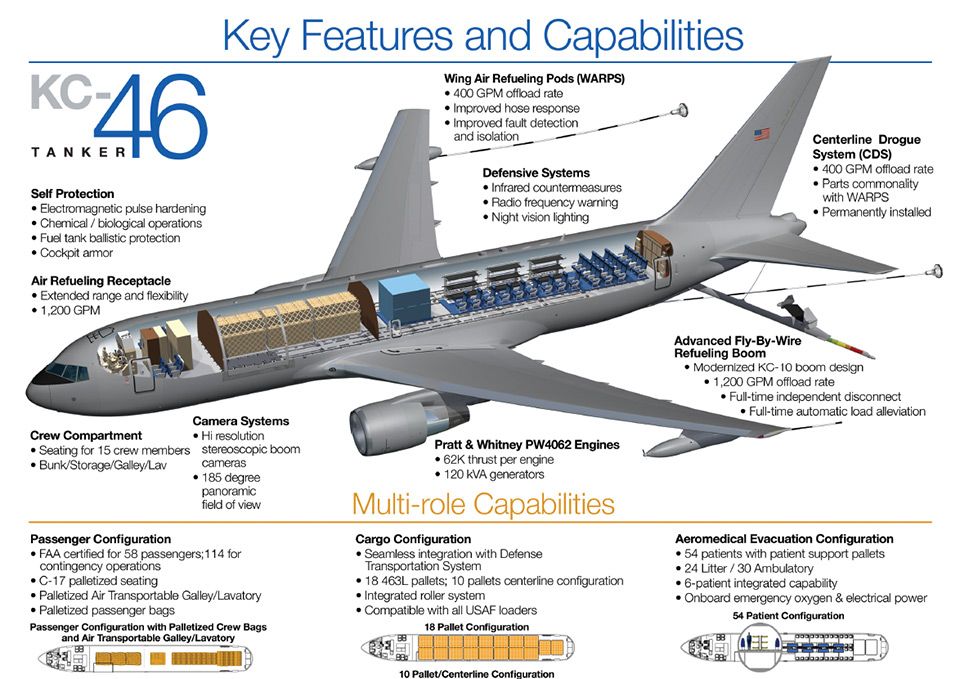
The central 2D/3D display replicates the boomer’s view out the back of the aircraft for boom refueling operations. The boom, which operates via fly-by-wire controls, is flown with control sticks mounted on either side of each boom operator’s console.
A third display, which is a heads-down unit, provides critical data related to the aircraft’s configuration and fueling operations. As you can see, the boom operators also use their tablets during missions. A wide variety of controls surround these display units, some of which are shared between the operator stations that are connected via a central console.
One advantage with the system is that boom operators can execute their mission in total darkness, with both aircraft blacked out visible light-wise. In the past, specially equipped KC-135RTs and highly trained crews focused on this type of refueling. You can read all about the shy world of Special Operations Aerial Refueling in this special feature of ours. At the same time, the system has proven to be highly troublesome and is set to undergo a major overhaul.



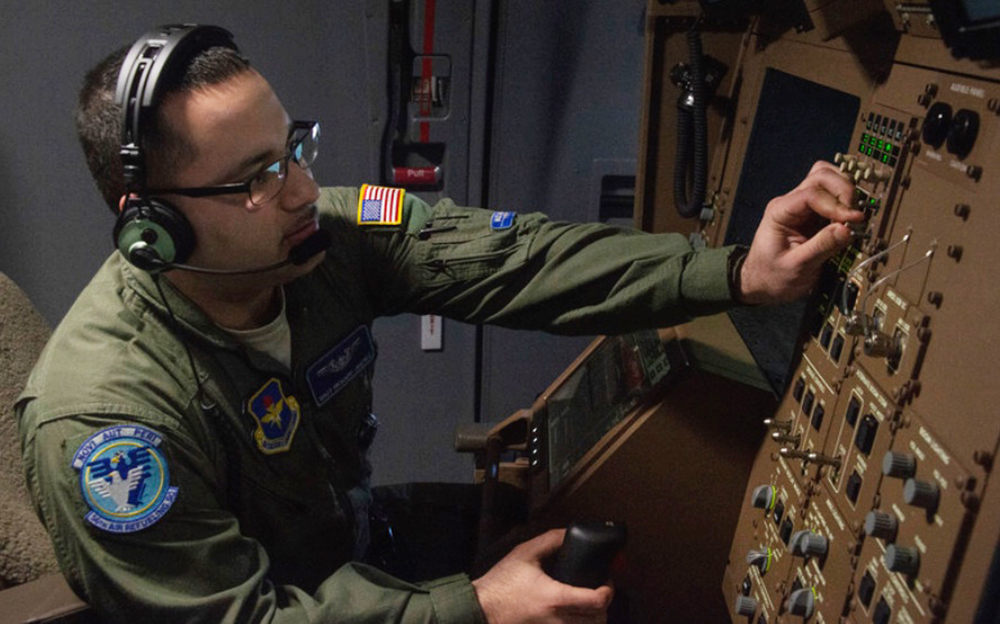

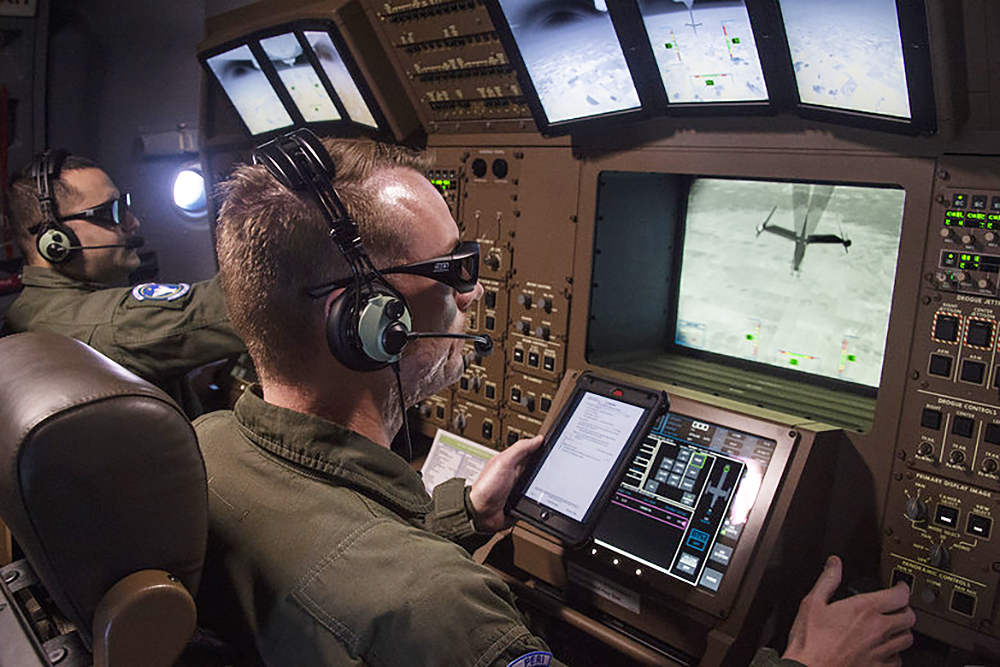


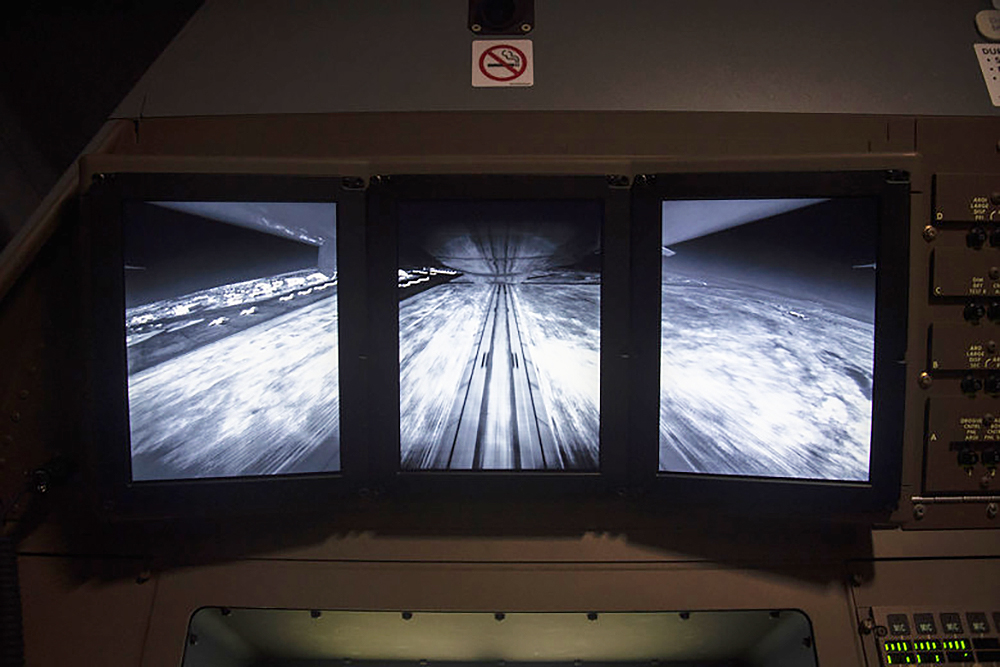
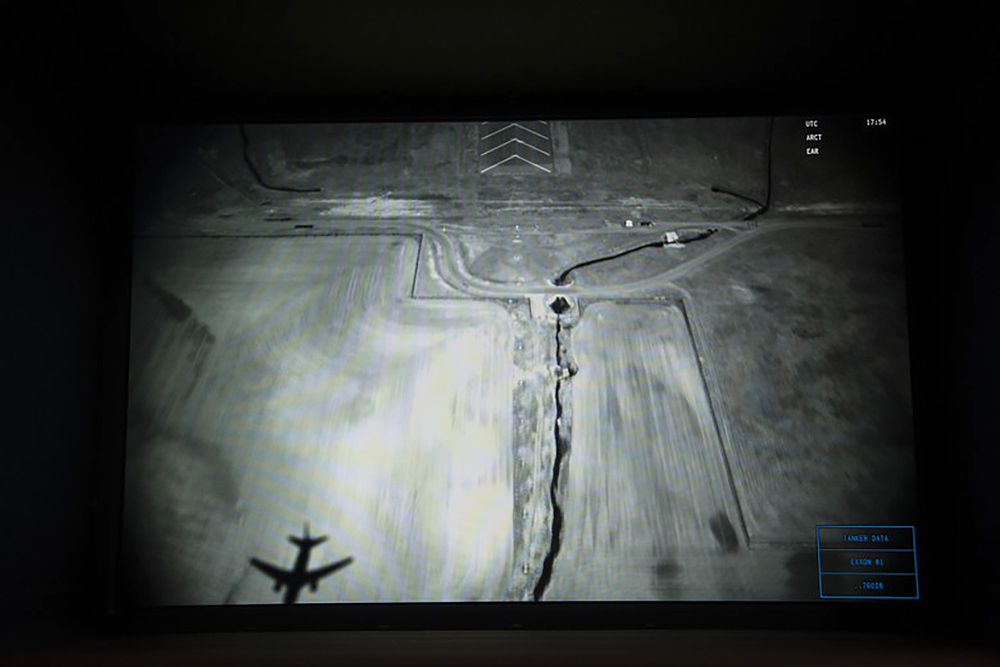
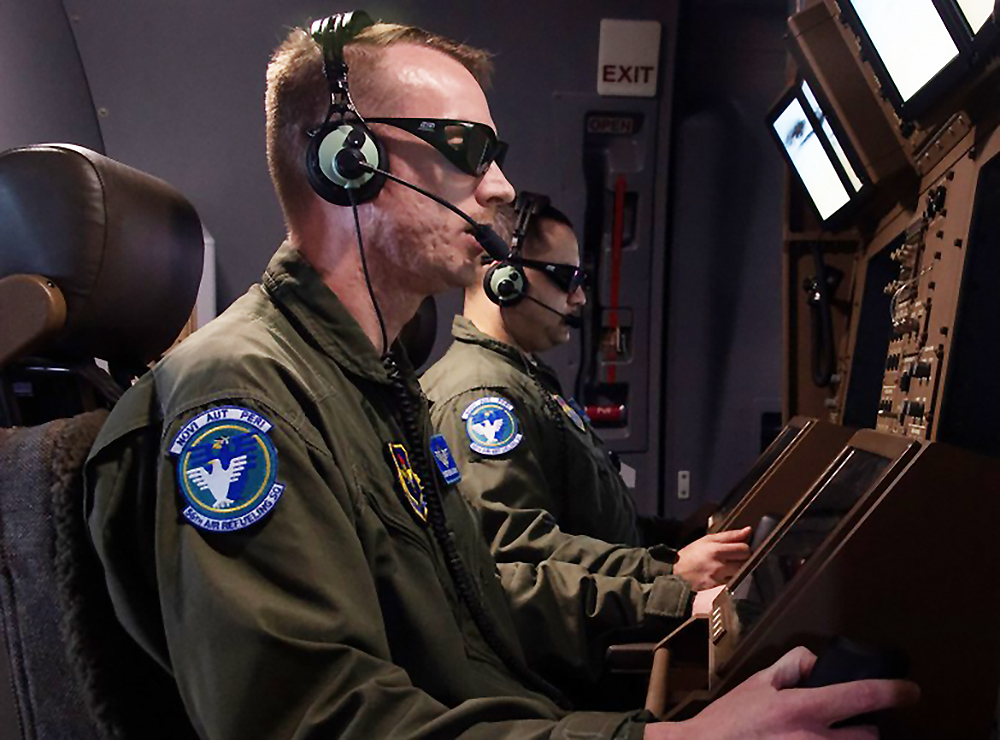
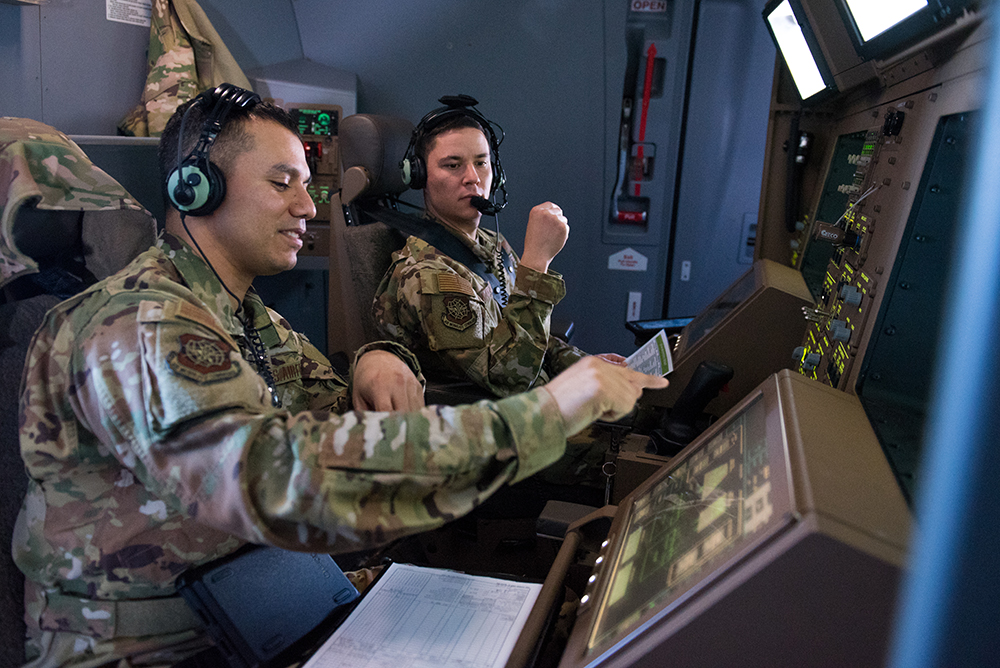
The KC-46’s development has been troubled, to say the least, but the Remote Vision System (RVS) that feeds video to the AROS has been at the very center of some of the most significant issues. Previous testing showed that there is a small, but problematic difference between what the boom operator sees and what might actually be happening at the tail end of the aircraft.
“There is a slight difference between the motion viewed in the RVS versus what is actually occurring in the physical world,” an Air Force official told Defense News in January 2019. “All of those things can create a depth compression and curvature effect.”
Any shadows, glare, or other similar factors might impact what the boom operator actually sees, causing them to over-compensate and swing the boom around erratically. This could put dangerous strain on the boom itself or increase the risk that it might strike the receiving aircraft, the latter being a particularly worrisome issue when working with stealth aircraft and their sensitive radar absorbing skins.
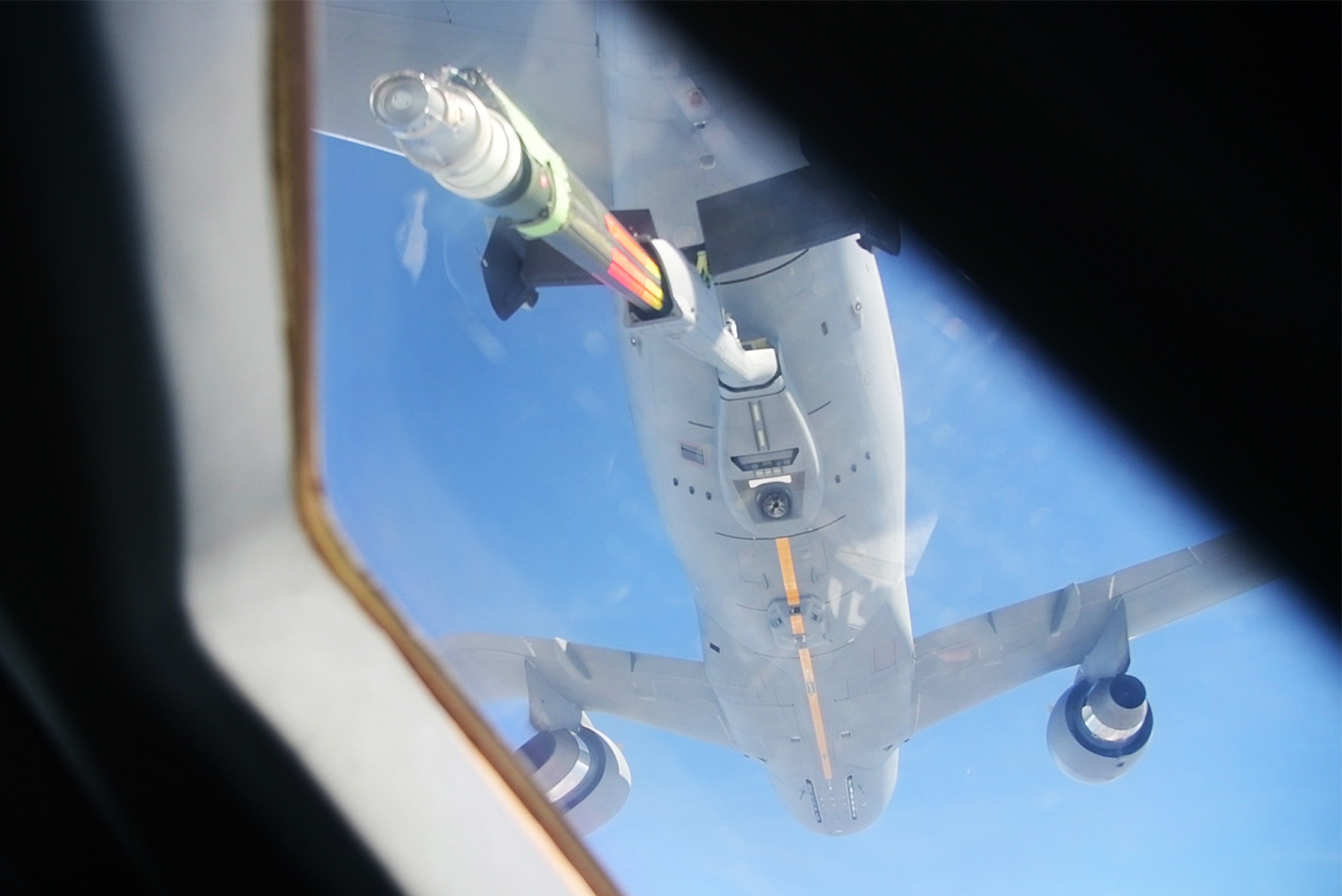
In addition, the hybrid 2D-3D system requires the use of stereoscopic glasses to get the full effect, just like watching a modern 3D movie in a theater. Studies have warned that this might lead to increased instances of eye strain, headaches, vertigo, and other vision issues, especially among individuals already predisposed to those issues.
So, when the Air Force accepted the first KC-46 in January 2019, it did so after Boeing agreed to completely overhaul the RVS at its own cost. This will include hardware changes, including new camera lenses and computer processing capability, as well as software fixes, among other things, according to Jane’s 360.
Just developing the fully revised RVS could take between three and four years, according to the Air Force and there’s no timeline yet for how long it might take to integrate those changes into any aircraft the service has already accepted up to that point. Of course, the delivery schedule has already been beset by delays.

Another major and seemingly flagrant issue with the aircraft has also popped up recently, one that has nothing to do with the plane’s development issues. In February 2019, Boeing halted KC-46 flight activities at its Washington state plant after finding loose tools and other foreign object debris inside the airframes of completed jets. Air Force personnel were at the facility at the time conducting flight training.
On Mar. 1, 2019, the Air Force confirmed that it had stopped accepted new KC-46s altogether over these issues. Less than two weeks later, though, the service began taking deliveries of the tankers again, after Boeing agreed to a 13-step corrective plan.
Then on Apr. 2, 2019, the Air Force revealed that it had again suspended accepting any more KC-46s more than week earlier due to more FOD turning up in completed aircraft. At the time of writing, the service is still refusing to take delivery of any more tankers until Boeing implements additional correction actions.
The good news is that these cost overruns, which have added up to a sum in the billions of dollars, are all on Boeing as they executed a fixed price contract for the jets. Still, further delays and capability issues will impact the USAF plans adversely in myriad ways and can hurt the flying force’s power projection capabilities when it needs them most. At the same time, competitors Airbus and Lockheed have joined forces to provide potential alternatives to future KC-46 acquisitions. Clearly, they smell blood considering the USAF’s unhappy disposition over the ongoing issues with its new tanker.
So even though the KC-46 is technically flying for the USAF today, a vision of what’s to come for the tanker still isn’t crystal clear.
Contact the author: Tyler@thedrive.com
